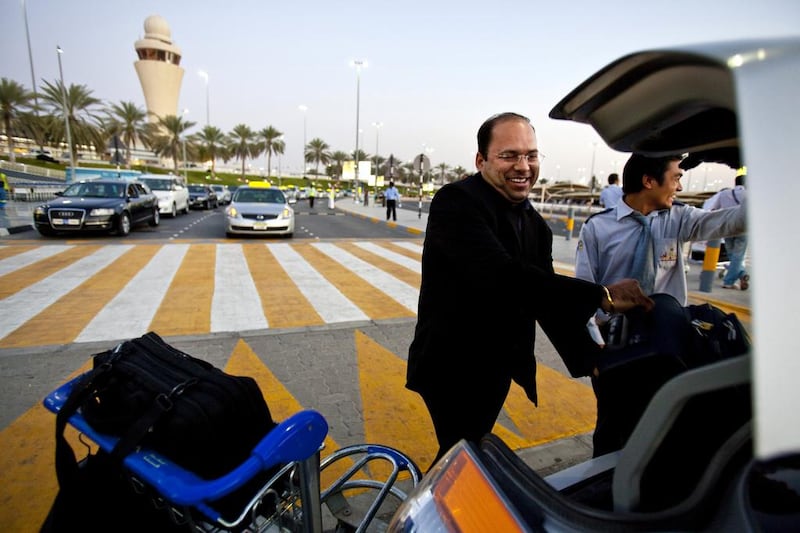Demand for travel between the UAE and the rest of the region helped Abu Dhabi International Airport to clock double-digit growth in February.
The airport handled 1.41 million passengers, a year-on-year increase of 15.6 per cent. There was also a 13.8 per cent rise in cargo handled at 56,902 tonnes in February.
"Such momentum will have no doubt its challenges in terms of capacity management, quality assurance and efficiency," said Ahmad Al Haddabi, the chief operations officer at Abu Dhabi Airports. "[This year] is anticipated to be another record year for Abu Dhabi International Airport."
Aircraft traffic also registered a double-digit increase of 12.2 per cent to 11,174 flights in February compared with a year earlier.
The top five routes from Abu Dhabi were Bangkok, Jeddah, Doha, Manila and London Heathrow.
"Most of the popular routes mentioned have poorly serviced competition whereas Etihad and other Gulf airlines bring new jets and higher quality on board products that people want," said Saj Ahmad, the chief analyst at StrategicAero Research.
Etihad’s growth is translating into sustained double-digit traffic growth at Abu Dhabi International Airport, he said. “It’s clear that the wider UAE has a big monopoly now for long haul transit travel.”
This year, Etihad will expand flight routes to Rome, Jaipur, Yerevan, Los Angeles, Dallas, Phuket, Zurich, Perth and Medina.
The airline’s network is also enhanced by its equity partnerships with international carriers such as airberlin, Aer Lingus, Air Serbia, Air Seychelles, Jet Airways and Virgin Australia.
Last month, India’s Jet Airways added daily flights connecting Abu Dhabi to the southern Indian cities of Bangalore and Hyderabad.
When the Midfield Terminal Building opens in 2017, the capital’s airport will be capable of handling more than 30 million passengers, up from 16.5 million last year.
Once completed it will be among the largest terminal buildings spread over 700,000 square metres.
The facility will also include 28,000 sq metres of retail space including duty free shops and restaurants.
More than 90 million passengers passed through UAE airports in 2013. Dubai airports alone handled 66 million passengers last year.
ssahoo@thenational.ae
Follow us on Twitter @Ind_Insights





